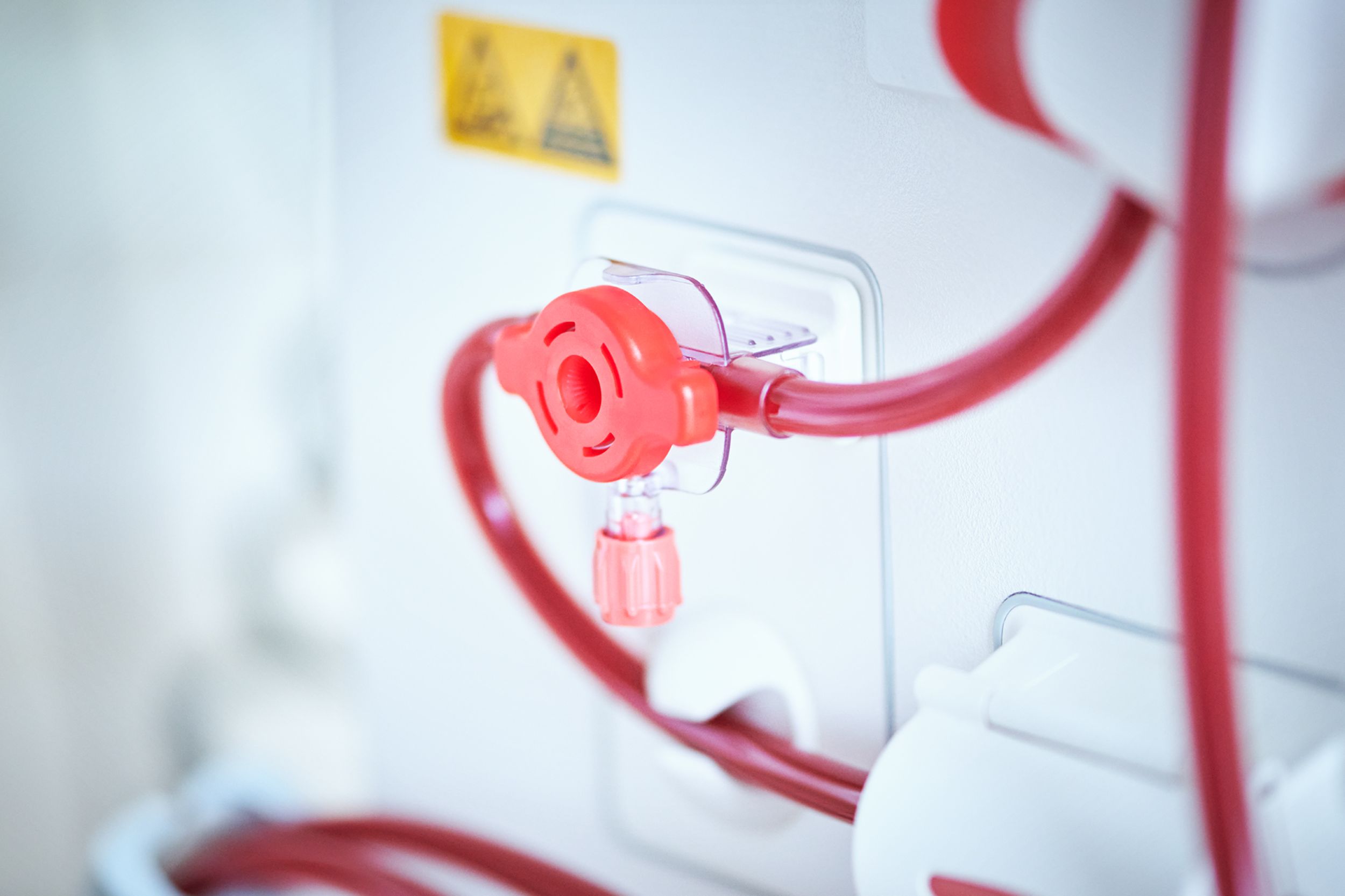
Dialysis treatments
My kidneys are no longer working: what treatment is possible?
In healthy people, the kidneys filter metabolic waste products from the blood and regulate the water balance. This produces urine, which is excreted via the bladder. If a person's own kidneys are no longer able to do this, a kidney replacement procedure is necessary to cleanse the blood. There are basically three ways to "replace the kidneys":
- Hemodialysis: this treatment can be performed in a center (hospital or outpatient unit) or at home (home hemodialysis).
- Peritoneal dialysis: this treatment is also carried out at home.
- Kidney transplantation: this treatment requires an operation. A foreign kidney is transplanted into the patient's own body. You can find more information here.
What is dialysis?
Dialysis is a blood purification procedure in which the body's metabolic waste products (commonly known as toxins) and excess water are removed from the body. We distinguish between hemodialysis and peritoneal dialysis.
Hemodialysis
In hemodialysis, a small amount of blood is continuously drained from the body and purified outside the body with the help of a special filter (the so-called dialyzer). As the blood flows through the filter, toxins and excess water are filtered out. The purified blood is then returned to the body. This process is painless.
The duration of dialysis treatment depends on the doctor's prescription. As a rule, dialysis patients come for dialysis three times a week for around four hours, either in the morning or in the afternoon. Additional time should be scheduled for preparation and follow-up of the dialysis treatment.
You can find more information about hemodialysis here.
Peritoneal dialysis or CAPD
In peritoneal dialysis (technical term: continuous ambulatory peritoneal dialysis, abbreviated to CAPD), the naturally occurring peritoneum is used as a filter system (i.e. dialyzer). In this dialysis procedure, the abdominal cavity is filled with a special solution (the so-called dialysate, usually 1-2 liters) via a catheter surgically inserted into the abdominal wall. As a rule, the dialysate remains in the abdominal cavity for several hours and cleanses the blood and removes excess water from the body in an exchange process. The dialysate is then drained out of the abdominal cavity via the catheter and replaced with fresh dialysate. This process is also painless.
You can find more information on peritoneal dialysis here.
Vacation dialysis
Are you planning a short trip or vacation in the Basel area? The University Hospital Basel offers you three locations for vacation dialysis:
- The dialysis center at the University Hospital Basel
- The Bethesda Hospital Dialysis Center
- The dialysis practice in Reinach, BL
The three locations give you the choice of carrying out your vacation dialysis "in the middle of the city of Basel" or "in the rural periphery". Our staff offer personal care in German, French, Italian and English.
All three locations are easily accessible by public or private transportation. Parking spaces are available.
We look forward to receiving your registration in good time:
Where can I have dialysis treatment?
Dialysis treatment can be carried out either at home (as peritoneal dialysis or home hemodialysis) or on site (at the University Hospital Basel or at an outpatient clinic, see below):
Location University Hospital Basel
Address:
University Hospital Basel
Petergraben 4
4031 Basel
Opening hours:
Monday to Saturday, from 7.00 a.m. to 6.00 p.m.
Registration:
Tel. +41 61 328 67 41
Bethesda Hospital location
Address:
Bethesda Hospital
Gellertstrasse 144
4052 Basel
Opening hours:
Monday/Wednesday/Friday from 7.00 a.m. to 6.00 p.m.
Tuesday/Thursday/Saturday from 7.00 a.m. to 1.00 p.m.
Registration:
Tel. +41 61 315 20 28
Reinach dialysis unit location
Address:
Dialysis station Reinach
Habshagstrasse 4a
4153 Reinach
Opening hours:
Monday/Wednesday/Friday from 7.00 a.m. to 6.00 p.m.
Registration:
Tel. +41 61 265 31 00
